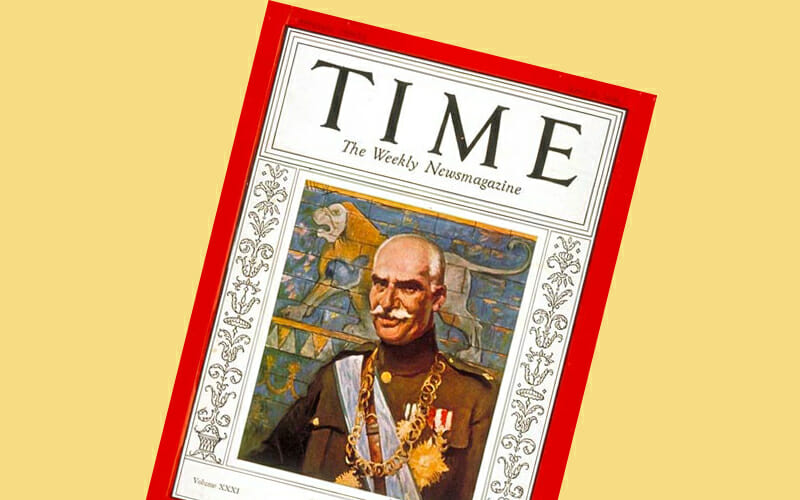
Why are Iranians Chanting “Reza Shah”?
Amir Taheri, an experienced Iranian journalist and political analyst who covers Iran and the Middle East, said earlier in a program on the BBC’s Persian channel that the Middle East is the most unpredictable point in the world. Recent developments in Iran might suggest that it is the most unpredictable place of the world.
Following the Arab Spring and the advent of events such as revolution and civil war in the countries of the region like Syria, Yemen and Libya, it was generally thought that Iran was the only “secure” and “peaceful” country in the region. Recent protests have discredited this hypothesis. In December protests, sparked by economic concerns began in Mashhad. Protestors demanded economic reforms which included the high cost of food and youth unemployment. However, the protests were quickly changed from the slogan “Death to Rouhani” and a critique of the state to slogans of a deconstructive nature against the whole political system of Iran and against its foreign policy (Gaza, not Lebanon, my life for Iran) or (leave Syria, think about us.)
Interestingly, the protests in Tehran were lighter and more widely spread than in other cities. The recent protests lack single leadership. Some analysts believe this is a positive issue and can prevent the emergence of a dictator in the future, but others believe it is a disadvantage because any protest without a leader remains fruitless. The spectra of the protestors in different cities of Iran are also diverse. However, the most amazing message of the protests were the slogans in support of the return of the monarchy to Iran and in defense of the Pahlavi dynasty, who were overthrown in the 1979 revolution.
Even more amazing is that in the two cities like Qom and Mashhad (known as the most religious cities of Iran), the protesting youth shouted “Reza Shah, rest in peace” and “What a mistake we made by taking part in the revolution” and “Iran haphazard, without the Shah.”
Why did young protesters shout in support of Reza Shah, a king who had died many years ago? To answer this question, the measures and achievements of Reza Shah (March 15, 1878 – July 26, 1944) should be mentioned. The legacy of Reza Shah can be summed up as modernism, secularism, and nationalism. In conjunction with Ataturk in Turkey, Reza Shah launched the idea of modernization in Iran. He began to discover the hijab (Kashf-e hijab) (involuntary removal of veils from women). He also provided public and general education to the Iranians, established universities, formed a modern army and organized the administrative affairs of the country. He also re-integrated Iran, which had been torn apart by several foreign wars and the incompetence of Qajar kings before he came to power (i.e. during the reign of Qajar period), which led to the preservation of Iran’s territorial integrity. He led Iran into the modern world in the twentieth century although his modernism was magisterial and top-down, and some intellectuals and opponents were suppressed.
After defending secularism, the first opposition by Shiite Muslim clerics to Reza Shah began when he announced the establishment of a republic after announcing the abolition of the Qajar dynasty. He was particularly inspired by Ataturk in Turkey. However, the clerics opposed this. They said that a monarchy is an integral part of religion. The clerics feared that religion would be abolished after the establishment of a republic, thus reducing their power, as was the case in Turkey. As a result, the establishment of the Republic was abandoned and the Pahlavi monarchy was officially established. Reza Shah confronted the clergy in order to reduce their power and influence. One of his measures was the establishment of Law on Compulsory Military Service. The clergy did not want to be sent into the military service. Another measure by Reza Shah was to force the removal of veils from women, which was objected to by clerics and religious protesters. The news of Kashf-e-hejab made the people of Mashhad angry and the marketers closed their shops in 1935, but the protests were suppressed.
Eventually, Reza Shah revived Iran’s national pride and pride in pre-Islamic history before the Arab invasion of Iran. As a result, he supported nationalism which was embodied in nation-state building in the modern sense. Reza Shah suppressed the nomads, tribal leaders and Khans and provided regional and local affairs with an administrative and political discipline which paved the way for the creation of a single state and a unified nation.
Protesting youths are likely to consciously or unconsciously chant for these components which reflect the ideology of Reza Shah. They have been living in a religious state under Islamic rules for many years. As a result, Reza Shah, as a symbol of modernism (albeit imperious and non-democratic) and secularism, is an indication of an alternative to the current religious, political and social system. Also, Iran has witnessed the political authorities’ underestimation of national identity and the replacement of Islamic and revolutionary identities over the past four decades. As a result, part of society has felt humiliated and, with the slogan in favor of Reza Shah and the revival of nostalgia, seeks to revive national pride.
Reza Shah’s grandson, Reza Pahlavi, lives in the United States today and is one of the leaders of the Iranian opposition. For many years he has been calling for a referendum to determine the future government in Iran. He supports a secular and democratic government regardless of what form it takes, a republic or a parliamentary kingdom.
Is it possible that one day Iran, like Spain after Franco, in which Juan Carlos became the king, could see a similar historical repetition? For some, the event seems a dream or even illusionary. Though, history never has a linear and predetermined process. It is good to take a look at the history of the French Revolution and what a volatile path it passed through to change the republic into a parliamentary and imperial kingdom and eventually a republic. History is the realm of the realization of the impossible. This issue is more tangible in Iran and the Middle East, the most unpredictable parts of the world.

